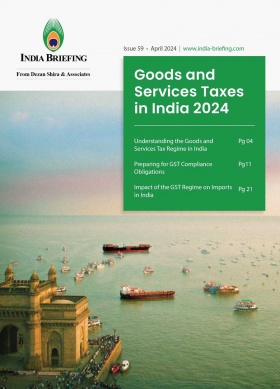India’s BIS Introduces Two New EV Safety Standards
The Bureau of Indian Standards (BIS) has unveiled two new criteria to improve electric vehicle (EV) quality and safety norms in India. The announcement was made by the Department of Consumer Affairs on June 22, 2024.
New safety regulations have been implemented in India to improve the performance and safety of electric vehicles (EVs) across various categories. The Bureau of Indian Standards (BIS) has announced two new Indian Standards: IS 18590:2024 and IS 18606:2024, applicable to electric vehicles in the L, M, and N categories.
These regulations aim to enhance the quality and safety of the powertrain, a critical component of electric vehicles, by ensuring it meets stringent safety criteria.
New standards to enhance EV safety in India
As per the announcement made by the Department of Consumer Affairs, the two new IS marks will address the safety and performance of batteries, making sure the EVs are both robust and secure.
As per the announcement, apart from cars and trucks, the new standards will also apply to e-rickshaws and e-karts. To cater to this, BIS has introduced IS 18294:2023, setting safety standards specifically for such vehicles. These standards include different aspects of EVs, such as the construction and functionality, as well as ensuring the safety of drivers and passengers.
With the introduction of these new standards, BIS now has a total of 30 IS measures focused on EVs and their accessories, including charging systems. The BIS comes under the Department of Consumer Affairs, Ministry of Consumer Affairs, Food & Public Distribution.
IS 18606: 2024 Electric Power Train of M and N Category Vehicles
Scope:
- This standard outlines safety requirements for the electric power train in motor vehicles of M and N categories, as per IS 14272.
- It also specifies safety requirements for the rechargeable electrical energy storage system (REESS) in these vehicles.
Note: This standard does not apply to batteries primarily used for starting the engine, lighting, or other auxiliary systems.
IS 18590: 2024 Electric Power Train of L Category Vehicles
|
EV Categories in India and their Specifications |
||
|
EV categories |
Sub-categories |
Specification |
|
L |
Category L1 |
Means a motorcycle with maximum speed not exceeding 45 km/h and engine capacity not exceeding 50cc if fitted with thermic engine or motor power not exceeding 0.5 kilowatt if fitted with electric motor. |
|
Category L2 |
Means a motorcycle other than Category L1. |
|
|
Category L3
|
Means a two wheel motorcycle with an engine cylinder capacity in the case of a thermic engine exceeding 50 cm3 or whatever the means of propulsion a max. design speed exceeding 50 km/h. with more then 50 cc and speed of more then 50 kmph. |
|
|
Category L5M |
Passenger carrier (Auto rickshaw) and Gross vehicle Weight is equal to 1500 kilograms |
|
|
Category L5N |
Means a motorcycle other than Category L1 |
|
|
M |
Category M1 |
Means a motor vehicle used for the carriage of passengers, comprising not more than eight seats in addition to the driver’s seat. |
|
Category M2 |
Means a motor vehicle used for the carriage of passengers, comprising nine or more seats in addition to the driver’s seat and having a maximum Gross Vehicle Weight not exceeding 5 tons |
|
|
Category M2G |
Means a motor vehicle used for the carriage of passengers, comprising nine or more seats in addition to the driver’s seat and having a maximum Gross Vehicle Weight not exceeding 5 tons and Having addition Off road (Cross country vehicle) capabilities. |
|
|
Category M3 |
Means a motor vehicle used for the carriage passengers, comprising nine or more seats in addition to the driver’s seat and having a maximum Gross Vehicle Weight exceeding 5 tons. |
|
|
Category M3G |
Means a motor vehicle used for the carriage passengers, comprising nine or more seats in addition to the driver’s seat and having a maximum Gross Vehicle Weight exceeding 5 tons and Having addition Off road (Cross country vehicle) capabilities |
|
|
N |
Category N
|
Means motor vehicles having at least four wheels used for the carrying goods which may also carry persons in addition to the goods subject to conditions |
|
Category N1
|
Means a motor vehicles used for carriage of goods and having a Gross vehicle Weight not exceeding 3.5 tons. |
|
|
Category N2
|
Means a motor vehicles used for carriage of goods and having a Gross vehicle Weight exceeding 3.5 tons but not exceeding 12 tons. |
|
|
Category N3 |
Means a motor vehicles used for carriage of goods and having a Gross vehicle Weight exceeding 12 tons. |
|
Standards for EV charging infrastructure
In tandem with the growth of the EV industry in India, the central government is also preparing to implement a uniform charging protocol. In October 2023, it was reported that two norms have been proposed under the standardized charging protocol, i.e., either two charging standards—one standard for two-wheelers and three-wheelers and another standard for four-wheelers—or a single standard that would apply to all categories of EVs. The measure was taken to address concerns regarding inconsistent charging infrastructure that prevents interoperability within the industry.
On September 1, 2022, India’s Ministry of Road Transport and Highways (MoRTH) released modifications to the EV battery testing standards AIS-156 for two- and three-wheelers and AIS-038 (Revision 2) for four-wheelers. Additional safety regulations pertaining to battery cells, battery management systems, on-board chargers, battery pack design, heat propagation from internal cell short circuits that cause fire, etc., were incorporated in these updates.
The revisions were supposed to take effect on October 1, 2022; however, the MoRTH issued a statement stating that the EV firms were allowed an extension. As a result, the two testing standards were implemented in two parts, starting on December 1, 2022 (Phase 1), and ending on March 31, 2023 (Phase 2).
About Us
India Briefing is one of five regional publications under the Asia Briefing brand. It is supported by Dezan Shira & Associates, a pan-Asia, multi-disciplinary professional services firm that assists foreign investors throughout Asia, including through offices in Delhi, Mumbai, and Bengaluru in India. Dezan Shira & Associates also maintains offices or has alliance partners assisting foreign investors in China, Hong Kong SAR, Vietnam, Indonesia, Singapore, Malaysia, Mongolia, Dubai (UAE), Japan, South Korea, Nepal, The Philippines, Sri Lanka, Thailand, Italy, Germany, Bangladesh, Australia, United States, and United Kingdom and Ireland.
For a complimentary subscription to India Briefing’s content products, please click here. For support with establishing a business in India or for assistance in analyzing and entering markets, please contact the firm at india@dezshira.com or visit our website at www.dezshira.com.
- Previous Article Guide to Business Income Tax Return Filing in India
- Next Article FDI in India FY 2023-24: Top State and Sector Beneficiaries








